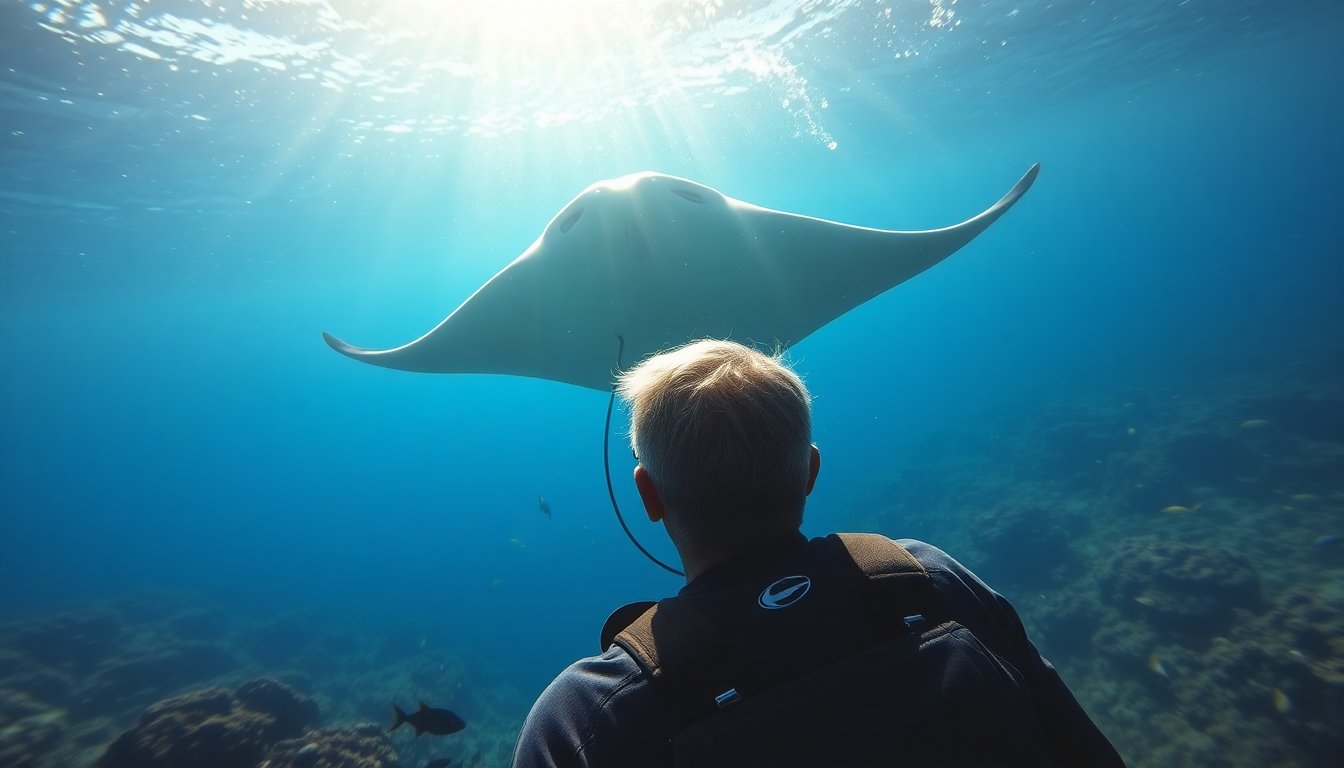Table of Contents
In the field of marine conservation, the story of Terry Kennedy stands out. An ex-Hell’s Angel, Kennedy transformed his life by dedicating himself to the protection of manta rays. His journey is documented in “The Last Dive,” which takes viewers into the stunning waters of Mexico’s Sea of Cortez. Here, Kennedy formed a remarkable bond with a 22-foot manta ray named Willy, which redefined his life’s purpose. Having experienced both a rebellious past and the tranquility of ocean exploration, Kennedy’s narrative highlights the delicate balance between human activity and marine life.
A Life Transformed in the Sea of Cortez
Terry Kennedy’s journey began in the 1980s. Following a stint in prison, he sought a fresh start, relocating to a sailboat named Erotica, anchored in the picturesque Sea of Cortez. It was here that he discovered newfound tranquility, far removed from his turbulent past. His life took an unexpected turn when he encountered Willy, a giant oceanic manta ray. This unique relationship blossomed as Willy signaled Kennedy to join him in the water, leading to countless underwater adventures over the next 19 years. Together, they explored the ocean’s depths, fostering a bond that transcended the typical human-animal relationship.
Through Kennedy’s extensive collection of home videos, the marine biology community gained invaluable insights into manta ray behavior. This documentation enabled researchers to study these majestic creatures in unprecedented ways. It not only showcased the beauty of the ocean but also underscored the pressing need for conservation efforts in a rapidly changing environment.
The Return to the Sea of Cortez
Now at 83 years old, Kennedy’s desire to reconnect with his past and search for one last ride with Willy brings him back to the Sea of Cortez after decades. The film’s director, Cody Sheehy, met Kennedy eight years ago and was initially skeptical of his incredible tales. However, after reviewing the extensive footage of Kennedy’s underwater escapades, he recognized the potential for a compelling narrative that could inspire a new generation of ocean advocates. As Sheehy reflects, “I suddenly realized Terry had the ability to inspire a whole new generation in the way that Jacques Cousteau had done so many years before.”
This personal connection to the ocean resonates deeply with Sheehy, who, as a father, worries about the future of marine life for his son. He emphasizes the urgency of the situation: “Everyone should know by now that the ocean is in trouble.” As the film unfolds, it becomes clear that Kennedy’s story is not just a personal journey; it serves as a broader call to action for marine conservation.
Lessons Learned and the Importance of Conservation
Throughout the filming process, Sheehy highlights the therapeutic nature of storytelling for Kennedy, who grappled with his past behaviors and the evolution of conservation practices. In the past, interactions with manta rays were less regulated, allowing divers to engage with these creatures more freely. However, as the dive community has grown, so too has awareness of the potential harm such interactions can inflict on marine ecosystems. The days of riding manta rays, once a thrilling pastime for divers like Kennedy, are now viewed through a critical lens, emphasizing the need for responsible and sustainable practices.
As the documentary progresses, viewers witness not only Kennedy’s personal growth but also a larger narrative about the changing tides of marine conservation. Sheehy’s collaboration with industry professionals, such as John Sloss, underscores the importance of thoughtful storytelling in advocacy. By examining the past and acknowledging the lessons learned, Kennedy’s journey serves as an inspiring testament to the power of transformation and the importance of protecting our oceans.


